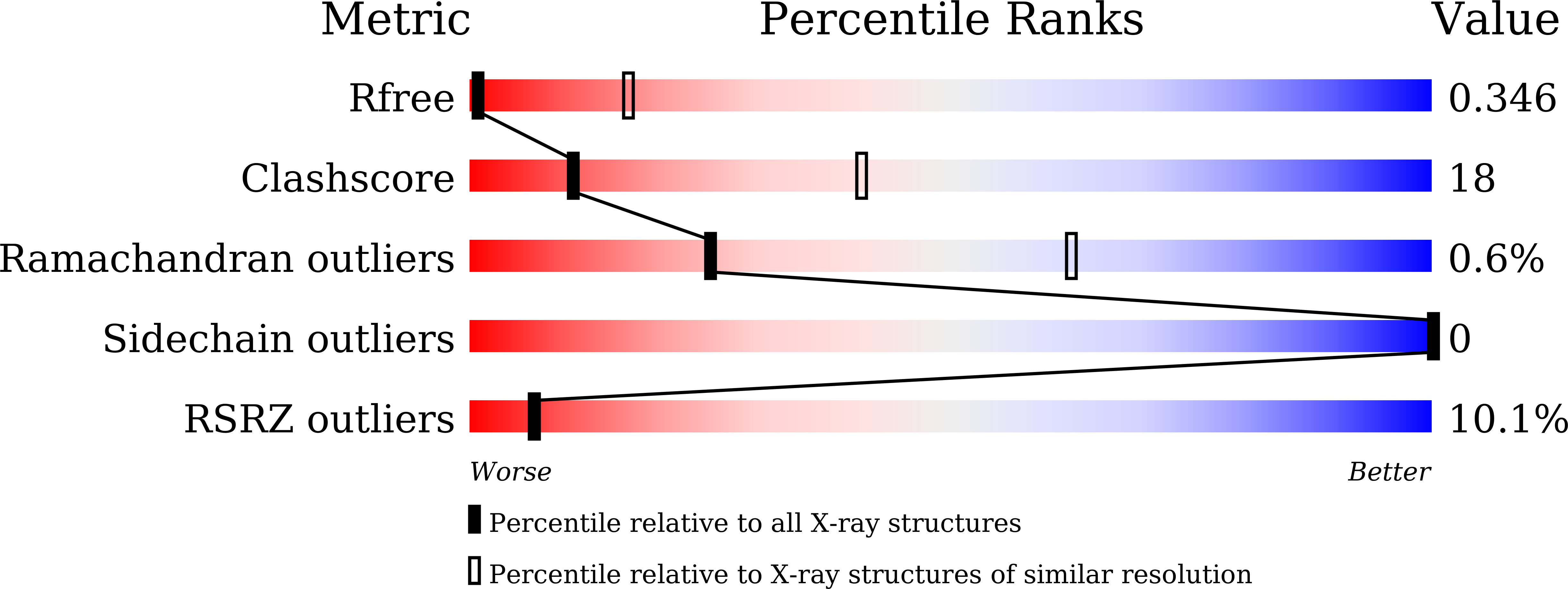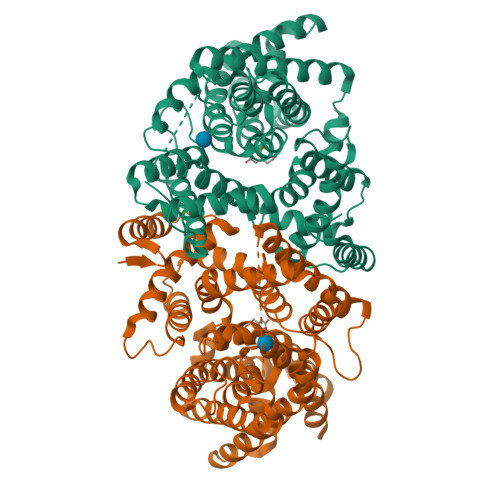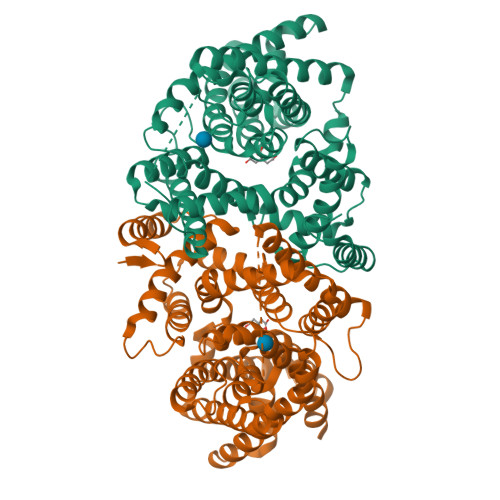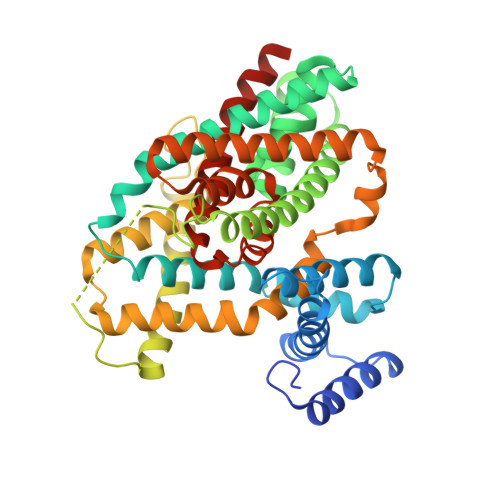Structural insights into the elevator-like mechanism of the sodium/citrate symporter CitS
Kim, J.W., Kim, S., Kim, S., Lee, H., Lee, J.O., Jin, M.S.(2017) Sci Rep 7: 2548-2548
- PubMed: 28566738
- DOI: https://doi.org/10.1038/s41598-017-02794-x
- Primary Citation of Related Structures:
5X9R, 5XAR, 5XAS, 5XAT - PubMed Abstract:
The sodium-dependent citrate transporter of Klebsiella pneumoniae (KpCitS) belongs to the 2-hydroxycarboxylate transporter (2-HCT) family and allows the cell to use citrate as sole carbon and energy source in anaerobic conditions. Here we present crystal structures of KpCitS in citrate-bound outward-facing, citrate-bound asymmetric, and citrate-free inward-facing state. The structures reveal that the KpCitS dimerization domain remains stationary throughout the transport cycle due to a hydrogen bond network as well as extensive hydrophobic interactions. In contrast, its transport domain undergoes a ~35° rigid-body rotation and a ~17 Å translocation perpendicular to the membrane to expose the substrate-binding site alternately to either side of the membrane. Furthermore, homology models of two other 2-HCT proteins based on the KpCitS structure offer structural insights into their differences in substrate specificity at a molecular level. On the basis of our results and previous biochemical data, we propose that the activity of the 2-HCT CitS involves an elevator-like movement in which the transport domain itself traverses the lipid bilayer, carrying the substrate into the cell in a sodium-dependent manner.
Organizational Affiliation:
Department of Chemistry, KAIST, 291 Daehak-ro, Yuseong-gu, Daejeon, 34141, Republic of Korea.


















